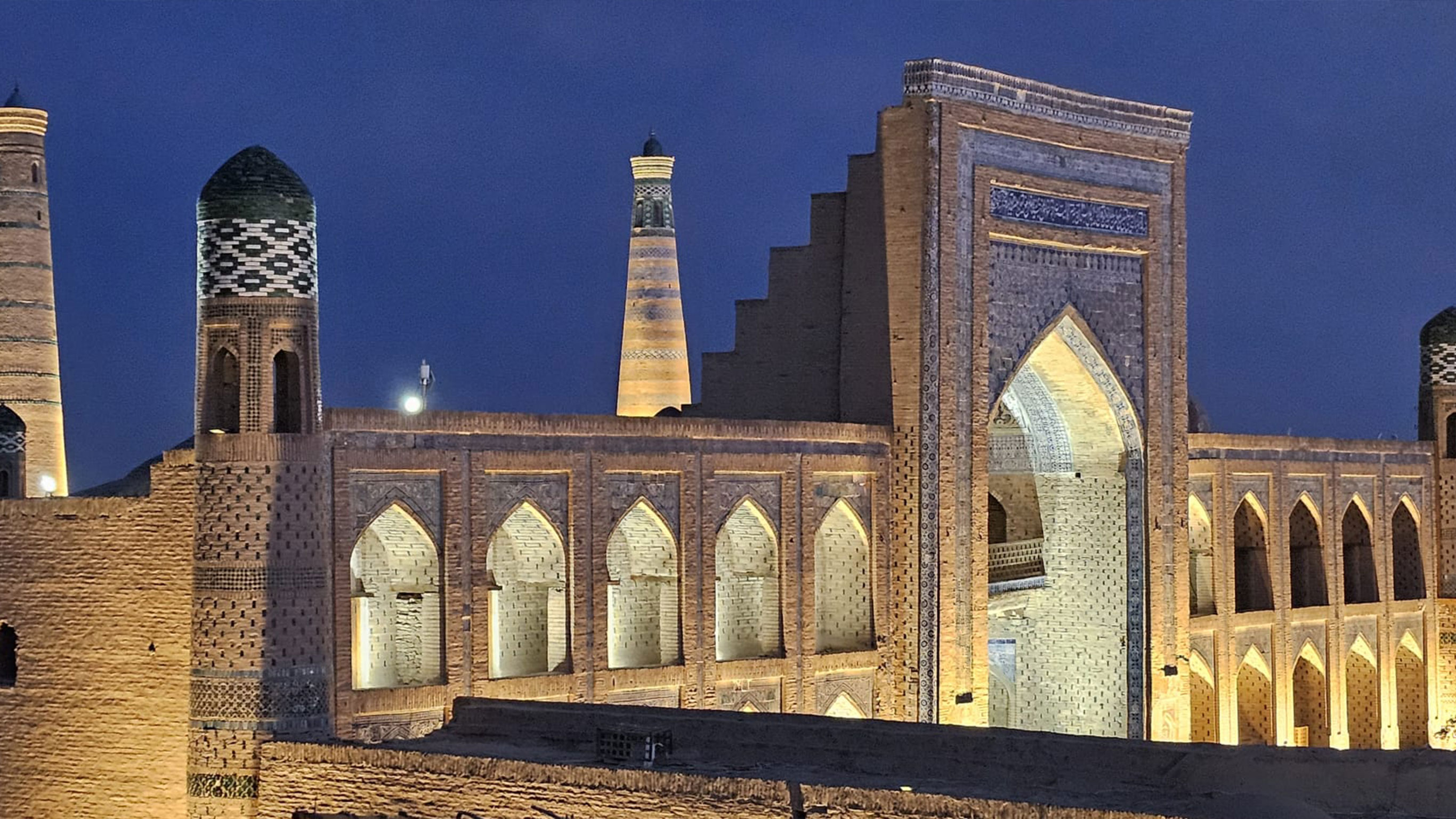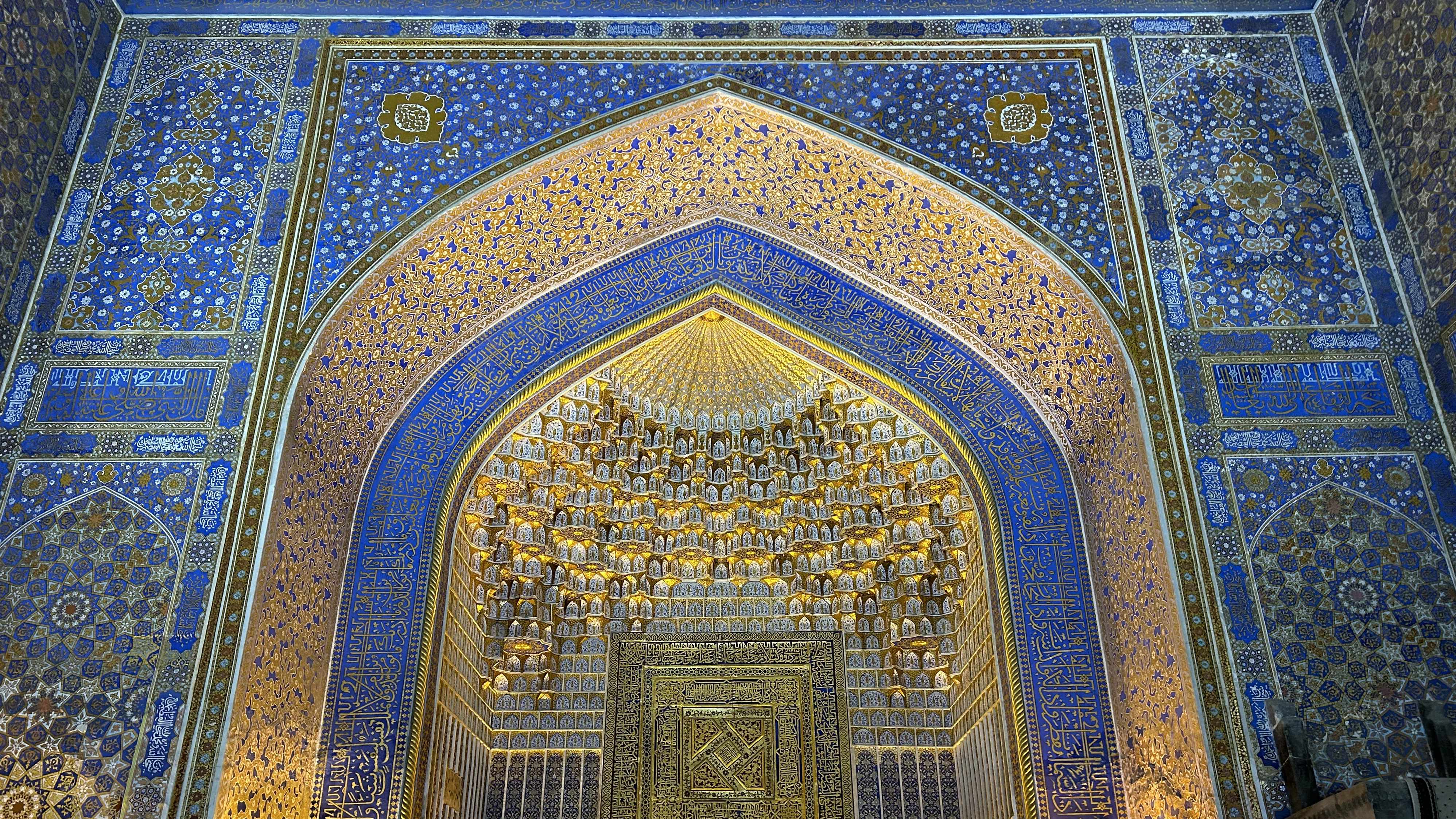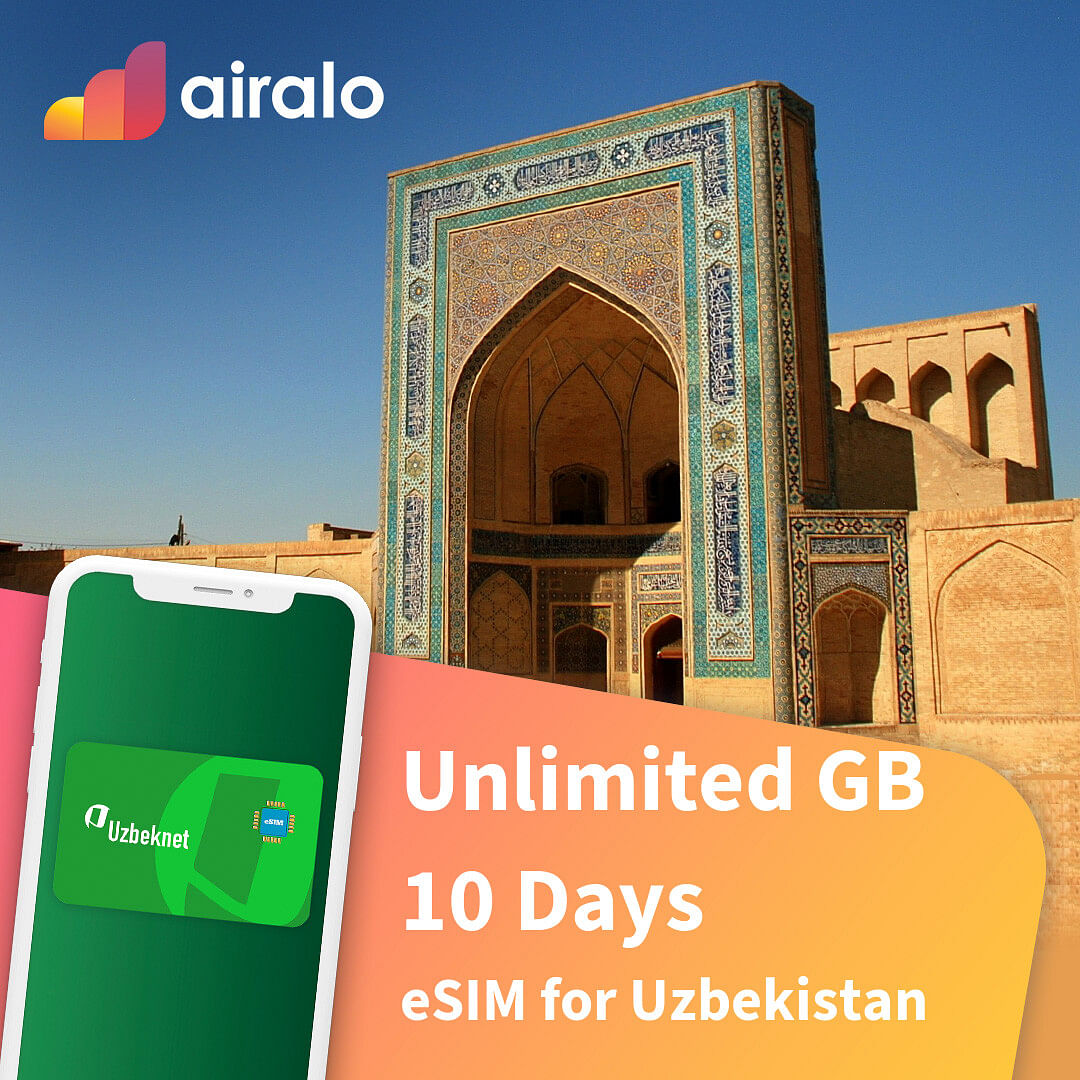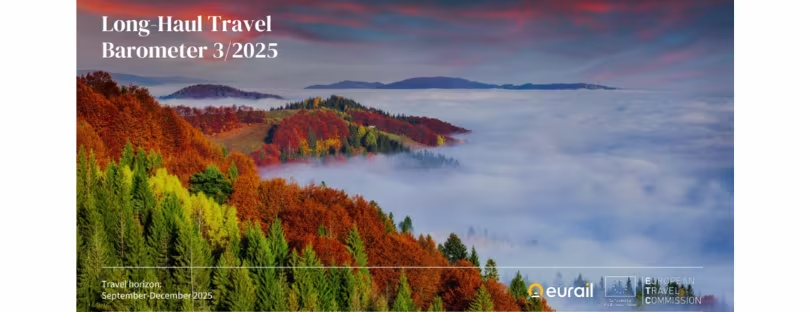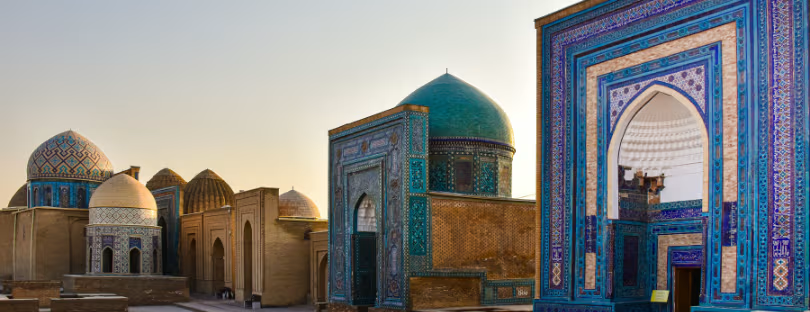
Following the Silk Road Through Uzbekistan: Culture, Carpets, and Conversations
First impressions matter. Landing in Tashkent feels like stepping into a city mid-sentence—Soviet modernism in mosaic with turquoise domes, metro stations that double as galleries, and the scent of non (bread) coming hot from tandoor ovens.
Uzbekistan isn’t a “hidden gem” anymore; it’s a place finding its voice again on the world’s oldest content highway. And along the Silk Road, that voice is textured—part market chatter, part madrasa echo, part loom-song from a carpet workshop.
Registan, Reality, and the Rhythm of Cities
Samarkand’s Registan is the headline act, but the story is more than a postcard. The “crossroads of cultures” cliché exists because it’s true here; empires rose, fell, and left the kind of architectural punctuation that makes you look up and go quiet. UNESCO has called out Samarkand’s two-and-a-half millennia at the crossroads of world cultures; you feel it the second you walk onto the square at sunrise, when the tilework shifts from lapis to firelight and back again with the moving sun.
Tashkent deserves equal billing. Its past is less ancient, more atomic—rebuilt after the 1966 earthquake as a beacon of socialist modernism, today it’s fighting (and often winning) to preserve that legacy. The metro stations—Kosmonavtlar especially—are a mood board of space age optimism. Preservationists and architects have been busy documenting, campaigning, and bringing this modernist heritage to global forums (yes, even Venice). The result is a city that’s learning to celebrate Chorsu’s blue dome and the UFO curves of the State Circus in the same breath.
Where the Market Teaches You to Listen
If the Silk Road had a soundtrack, Chorsu Bazaar would be the chorus—apricots and almonds clicking into sacks, spice vendors making poetry out of cumin and coriander, and butchers who know your star sign by how you point at cuts. The bazaar’s domed pavilion is a landmark in itself; it’s where Uzbekistan’s “hello” becomes a conversation: Where are you from? Have you tried the white cherries? Do you like plov or samsa more? Those conversations matter because they’re how you learn the rope—literally. A rug knot is an argument you tie with your fingers.
Carpets, Suzani, and the Hand That Remembers
“Handmade” means something particular here. A carpet from the Fergana Valley or Bukhara is not just a floor story; it’s a biography—tribal symbols, protection motifs, memory stitched into geometry. And suzani embroidery—apples, vines, suns—travels from dowry chest to gallery wall with disarming ease. UNESCO’s archives trace how Central Asian embroidery is passed down within families, mostly by women, with variations in stitch and pattern as distinct as accents. Watch long enough and you realize the real luxury is time: the time it takes to learn, to stitch, to finish.
Raillines and Realities: Moving Like a Local
There’s a simple test of how confidently a country hosts travelers: how easily you can get from A to B without haggling your sanity away. Uzbekistan passes with the Afrosiyob, a Talgo high-speed train that stitches Tashkent, Samarkand, and Bukhara together at up to 250 km/h. It’s punctual, clean, and pleasantly undramatic—the best kind of transport. You’re sipping tea, and in two hours you’re in another century. Consider this your permission slip to build an itinerary that’s ambitious in geography but relaxed in pace.
Why eSIM Just Makes Sense Here
This is Alertify, so let’s talk connectivity: Uzbekistan’s mobile networks have leveled up fast in the cities, and for most travelers, an eSIM is the least fussy way to stay online from touchdown to train car. Install before you fly, land connected, and keep your primary number alive for banking codes and WhatsApp while the eSIM handles data. Price-shopping across providers is straightforward now, and plan availability for Tashkent–Samarkand–Bukhara coverage is wide. A credible, up-to-date aggregator confirms dozens of Uzbekistan-compatible eSIM plans (and counting), which matters if you want to match data size to trip length rather than hunt kiosks for plastic.
Conversations You Won’t Forget
Uzbek hospitality is not performative; it’s muscle memory. You’ll be invited for tea, then for plov, then—inevitably—to meet someone’s cousin who weaves, repairs, or sources what you didn’t know you wanted. Accept. The real Silk Road is the social network of artisans and tea tables where a purchase is an endnote to a lesson. Ask about the pattern that repeats near the border; ask who taught them the stitch, and ask who their best teacher was. Nine times out of ten, the answer will be someone’s grandmother.
Bukhara’s Old City: Time Travel with Receipts
Bukhara feels like an old manuscript you’re allowed to dog-ear. Minarets rise like exclamation points; madrasas turn courtyards into stages for dusk. The shopping here is temptingly curated—carpets, ikat jackets, ceramics with that signature “Bukhara blue.” But what sets it apart is the intact urban fabric. Wander enough and you’ll find a dyer who will explain the difference between pomegranate skin and walnut husk stains—and why they still matter, even in an age of chemical shortcuts. That’s the conversation where your haggling turns into respect.
Tashkent’s Modernism Meets Market DNA
Back in the capital, you can plot a day that moves from the Zhemchug residential block to the Central Exhibition Hall, then underground to the metro’s enamel-bright platforms before surfacing at Chorsu for a bag of cumin that will perfume your clothes all week. There’s a national conversation about how to protect and position these modernist landmarks—documentation drives, exhibitions, a UNESCO bid in play—because the city understands its future brand sits at the intersection of past and present.
The Silk Road, Plural—How Uzbekistan Compares
Let’s put Uzbekistan in context. Other Silk Road “players” have carved out distinct propositions:
- Xi’an leans on imperial spectacle and museum caliber (hello, Terracotta Army).
- Kazakhstan sells scale and scenery, with Almaty as a lively launchpad.
- Turkmenistan and Iran offer monumental grandeur, but with access and bureaucracy hurdles that change year to year.
- Kyrgyzstan is the go-to for raw, nomadic landscapes and yurt-to-yurt trekking.
Uzbekistan’s edge is “density of experience”: three world-class cities within a high-speed triangle, layered with living craft traditions and an increasingly easy visitor journey (visas, trains, cards, and yes, data). It’s the destination where you can brunch under Soviet space mosaics and spend sunset in a Timurid square—without a flight between them. That comparative advantage becomes clearer when you scan Silk Road roundups that consistently place Samarkand, Bukhara, and Khiva in the global top tier for urban heritage.
Trends Worth Watching (and What They Mean for You)
Two trajectories matter right now. First, the preservation of Tashkent’s modernist fabric isn’t just for architecture nerds; it’s Uzbekistan staking a broader claim on cultural distinctiveness, beyond blue tiles and caravanserais. Expect more curated routes, guided tours, and public programming around these sites as the documentation work matures. Second, connectivity is professionalizing: reliable eSIM coverage, digital ticketing for trains, and more consistent POS acceptance in tourist corridors reduce friction and widen appeal. Combine that with a craft revival that’s market-savvy rather than purely nostalgic, and you get a destination confident enough to be specific.
What to Buy, How to Buy
If you come for one thing, make it a story you can carry home. Carpets are obvious—but suzani panels, old and new, fit modern interiors with less commitment and travel weight. Ask about natural dyes, knot counts, and time on the loom. If a seller can explain the pattern’s origin and the maker’s name, you’re on safer ground. And yes, bargain—but aim for fair. The price you agree to is a contract that keeps the workshop doors open.
A Real Conclusion: Why Uzbekistan Is Winning the Silk Road Now
Travel trends reward clarity. Xi’an is imperial China. Almaty is mountain-urban cool. Kyrgyzstan is backcountry freedom. Uzbekistan’s thesis is urban heritage you can walk, ride, and taste in a single, well-connected loop. That loop is powered by practical wins—Afrosiyob trains that run like clockwork, mobile connectivity you can sort before you fly, and a preservation agenda that is finally as newsworthy as its blue-tiled past. When reputable institutions highlight Samarkand’s millennial role on the Silk Roads, and major outlets scrutinize (and celebrate) Tashkent’s modernist identity, they validate what travelers already sense on the ground: this is a country with range—and with a plan. If you’re choosing among Silk Road routes, pick the one that lets you have the most conversations per kilometer. Right now, that’s Uzbekistan.





